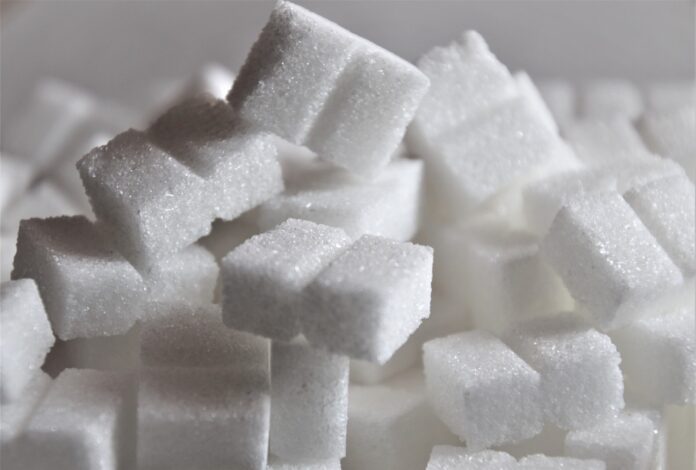We consume sugar daily, at least under normal circumstances. Even if you avoid sweets, sugar likely enters your body through other foods, as it is found in substantial quantities in most fruits. In moderation, sugar is beneficial for the body; however, individuals with sugar intolerance or diabetes need to avoid it and pay close attention to their diet.
Facts About Sugar
- Energy Source: In our bodies, sugar breaks down into fructose and glucose. Glucose provides about 50% of the energy our bodies consume.
- Historical Roots: Sugar production was first developed in the region that is now India.
- Primary Sources: In the industrial world, sugar is primarily produced from either sugar beets or sugar cane. While it can be extracted from other plants, these alternatives are less economically viable.
- Dopamine Release: Sugar triggers the release of dopamine in the brain’s pleasure center, leading to addiction in many people.
- Sugar Cane Height: The stalks of sugar cane can grow up to 9 meters tall.
- Inherited Sweet Tooth: Studies suggest that a tendency to overconsume sweets may be inherited.
- Increased Consumption: Over the last two decades, sugar consumption per person has increased to nearly 40 kilograms per year, as it is found in most food products.
- Cancer Risk: Excessive sugar intake raises insulin levels, increasing the risk of developing cancer.
- Hidden Sugar: Sugar is present in surprising quantities in unexpected products, such as ketchup, bread, and various sauces from different cuisines.
- Natural Composition: Natural sugar consists of lactose and fructose. Notably, added sugar in foods tends to have disproportionately high fructose content.
- Brain Impact: Studies on rats and humans show that excessive sugar intake can harm the brain, potentially damaging memory and accelerating overall brain aging. In large quantities, salt is even more toxic.
- Historical Slave Trade: Between 1701 and 1810, nearly one million African slaves were brought to Jamaica and Barbados to work on sugar cane plantations.
- First Sugar Factory: The first beet sugar factory was established in Kunern (now in Poland) by German scientist Franz Karl Achard in 1801 under the direction of the king, who allocated the necessary funds in 1800.
- Highest Consumption: Brazil has the highest per capita sugar consumption in the world.
- Monument to Sugar: In the Czech Republic, there is a monument to sugar cubes, invented in 1843 in the country.
- Cane Sugar Benefits: Cane sugar is slightly yellowish and is somewhat healthier than beet sugar, as the body absorbs it more quickly and easily.
- Global Production: Currently, 59% of the world’s sugar is made from sugar cane, while 41% comes from beets.
- Non-Food Uses: Sugar is widely used in manufacturing plastic, tanning leather, and in pharmaceutical, tobacco, and other non-food industries.
- Sugar Content in Fruits: Among fruits and vegetables, dates have the highest sugar content—33.68 grams per 100 grams. They are followed by jackfruit (9.48 grams) and kishmish grapes (7.2 grams).
- Interstellar Sugar: One type of sugar, glycolaldehyde, has been found in interstellar dust clouds billions of kilometers from Earth. When it reacts with other sugars, it forms ribose, the backbone of DNA and RNA, the molecules found in all living organisms. This discovery suggests that life on Earth might have originated from interactions with such dust clouds, and it also raises the possibility of life beyond Earth.
- First Description: Sugar was first described in 327 BCE by the Greek historian Onesicritus, who accompanied Alexander the Great on his Indian campaign, stating, “In India, the reed gives honey without bees.”
- Luxury Item: Until the late 18th century, sugar was considered a luxury and was even called “white gold.”
- Sweetest Substitute: The synthetic sugar substitute lugduname is nearly 300,000 times sweeter than regular sugar. Just one tiny crystal is needed to sweeten a cup of tea, compared to at least 10 grams of regular sugar. Other substitutes, like aspartame and saccharin, were discovered accidentally during attempts to develop synthetic ulcer treatments.
- Medieval Medicine: In Medieval Europe, sugar was considered a medicinal remedy and was sold in pharmacies.
- Sugar Packets: Sugar packets were invented by Benjamin Eisenstadt, a New York coffee shop owner, to optimize sugar use at tables. Unfortunately, he did not patent the invention and shared the idea with manufacturers who quickly adopted it.
- Fuel Source: In some countries, like Brazil and India, cars run on fuel derived from sugar beets. This fuel is essentially a combustible alcohol that is eco-friendly.
- Sugar-Producing Fruits: Some fruits, like bananas, produce their own sugar. In ripe bananas, sugar is formed by breaking down starch, making them sweeter.
- Global Production: Over 110 million tons of sugar are produced annually worldwide.
- Natural Preservative: Sugar is a natural preservative, preventing food spoilage.
